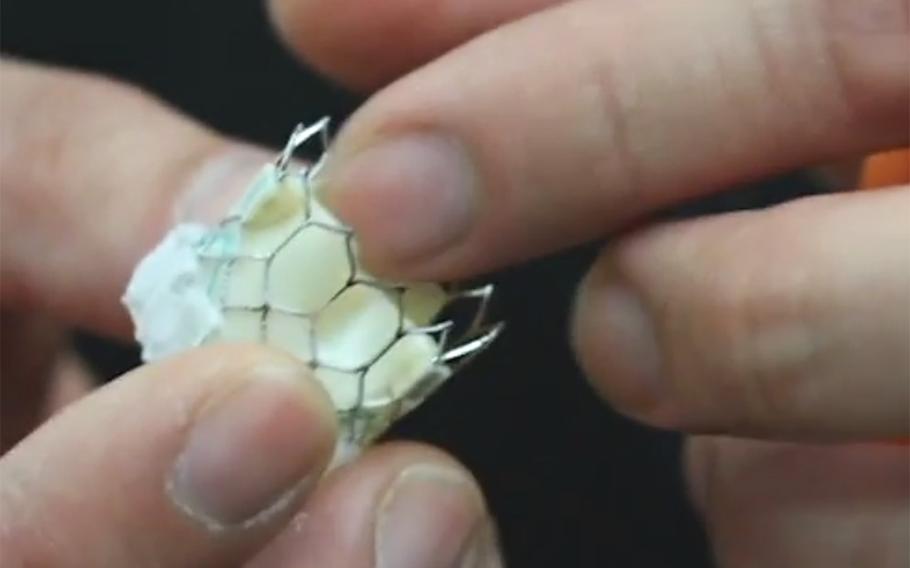
Lt. Col. (Dr.) Eugene Soh, an interventional cardiologist at Walter Reed, shows the balloon-expandable transcatheter heart valve. (Stars and Stripes)
BETHESDA, Md. — Major open-heart surgery to replace a valve is now a thing of the past for many patients at Walter Reed National Medical Center.
Trans-catheter Aortic Valve Replacement, or TAVR, involves replacing the aortic valve by inserting a catheter through the femoral artery, located near the groin. According to the American Heart Association, TAVR is somewhat similar to having a stent placed in an artery, and it delivers a fully collapsible replacement valve to the site through a catheter.
Once the new valve is expanded it pushes the old valve leaflets out of the way, and the tissue in the replacement valve takes over the job of regulating blood flow.
Officials at Walter Reed are happy with the new procedure that they have been performing since November 2015, as it provides an easier alternative to open-heart surgery for older patients.
hardy.kenyon@stripes.com Twitter: @KenYonHardy